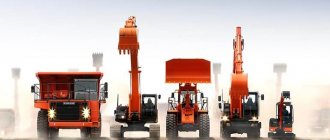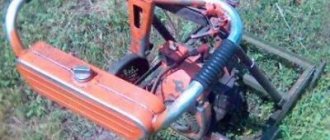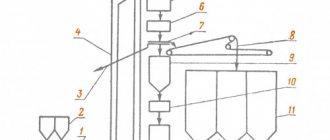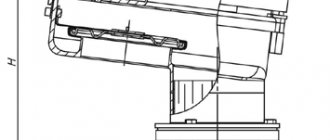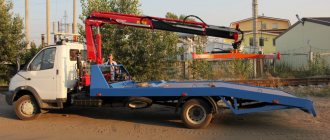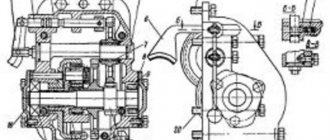Motorists are very rarely sympathetic to the appearance of a cyclist on the road. This is caused by many factors: the cyclist’s independence from traffic jams, envy of good sports shape, the understanding that cycling is a vacation that in itself brings joy. Only few of the drivers sitting behind the wheel think that the very development of the automotive industry is very closely connected with the bicycle and its components.
This relationship began in 1888, when Englishman John B. Dunlop decided to improve the wooden wheels of his son's bicycle. He installed on them the progenitor of all those tires that now run on the roads, beginning the era of comfortable driving. It is unlikely that modern cars would be as fast and comfortable without one children's bicycle. Even now, related features can be found among car and bicycle tires. For example, a car nipple. It, like two other types, is used in the bicycle industry
Help: Nipple (from the English Nipple - nipple) is a connecting tube with a check valve.
Nipple
Modern bicycles are full-fledged vehicles, the popularity of which is increasing every day. The models are simple and accessible, and thanks to the combination of conventional mechanisms and elements, the units truly function flawlessly. These include nipples - small parts with an interesting history. The nipple installed in the wheel affects its functionality, and this small detail should be discussed in more detail.
Tubeless tires
In addition to the usual tubes, the wheels of professional bicycles usually contain tubeless tires, just like in cars. This gives some advantage in the weight of the wheels, and also reduces the chance of a tire puncture, or rather, the tire will be punctured in the same way as before, but at the same time it will be immediately repaired with the help of sealant poured inside. The only disadvantage of such systems is the price.
Inflating a tubeless bicycle tire is as easy as a regular one. The design of the nipple is no different in appearance from a regular presta, and can be inflated using the cheapest nozzle. Inside, such a nipple ends immediately behind the inner wall of the rim and looks more like an air can than a part of the wheel. Externally, you can distinguish a tubeless tire from a standard tire only at close range, by the rubber gasket under the nipple lock.
«>
What is a nipple
On any wheel there is a small metal tube that connects the wheel chamber to the check valve. This is the nipple through which air is pumped into the tire and held in it.
For the manufacture of nipples, brass is mainly used, but sometimes specimens made of a steel alloy are found. The main purpose of the part is to ensure tightness and retain air in the chamber.
Appearance
Initially, all vehicles had wooden wheels. It was only at the end of the 19th century that a certain John Dunlop came up with the idea that inflatable rubber wheels were much more practical and convenient. Therefore, he developed special protectors for his son’s bicycle, which contained air inside. From time to time the wheels required pumping, which is why the nipple was invented. Thus a new word appeared in the history of transport development.
These parts began to be used not only for bicycle wheels, but also for car wheels. Over time, varieties of these miracle nuts appeared. We'll talk about them.
In some information sources, a bicycle nipple is also called a spool valve. However, these are slightly different concepts. The spool is the part of the nipple that directly supplies air to the tires, moving in a straight line. But for convenience, in this article we will identify these concepts.
How did he appear
We figured out what it is, now let’s devote a little time to the history of the appearance of the nipple. Few people know that the automotive construction industry is closely interconnected with the design of bicycle equipment and its specific mechanisms. This connection owes its appearance to the Englishman John B. Dunlop, who decided to somewhat modernize the wheels of children's bicycles. He installed the prototype of tires on the wheels, which continue to be used today. Thus, the era of modern road transport began with a child’s bike.
Much in common between a car and a bicycle can be found in their designs. One example is the tube nipple, without which the wheel turns into a regular piece of rubber material. It is difficult to overestimate the purpose of this element, so we will understand the design and study different types of parts, talk about the criteria for its selection and methods for checking its functionality.
Standards
This part of the bicycle has not undergone complex changes in design and even appearance for many years. Therefore, at the moment there are only two popular nipple standards:
- Presta/FV - or French nipple - is used on all road bikes as well as high-end mountain bikes.
- Schrader/AV is truly an automotive standard. Installed on wide tubes, children's tubes, most hardtails or touring bikes.
In addition to these two standards, Dunlop is still used today. To be honest, it is not clear why they produce tubes for this type of bicycle nipple, thereby supporting it. It has an extremely strange and unreliable design in the form of a completely drop-out spool, a system of two retaining rings, one of which holds this valve. In addition, it is very sensitive to dirt. Any small pebble or sand clogged under the valve rubber can block the air.
«>
Types of nipples for bicycle wheels
There are three of them, and the main differences are the design nuances, scope of use and other parameters.
Shredder
The most common option, the diameter of its tube is 8 mm. Structurally, it consists of a spool, a rubber sealing element that closes the hole in the tube, the length of which is 4, sometimes 6 cm. When connecting the compressor, the middle pin in the hose opens the valve through which air enters the tire. The part does not cause any difficulties in servicing; it is reliably protected from dirt and water by a special cap. Compatible with any car compressor, used on hybrid and mountain bike models from low to mid-level, on bicycles intended for extreme riding.
You might be interested in Tubeless nipple: how to clamp a tubeless wheel
Dunlop
Many cyclists remember him from the Soviet Union. A rough structure, the memory of which many internally shudder, capable of breaking at any moment. It is designed according to the following principle: a tube is screwed into the wheel, the hole of which is closed with a rubber tube or cambric. You can rarely see it, only on old bicycle models. The mechanism is not particularly reliable and is very vulnerable: just a small pebble or dust gets under the spool rubber, and the old bicycle nipple immediately loses its functionality.
Presta
The most popular version of the bicycle nipple, characterized by a more advanced design. But there is still one peculiarity: a car compressor is not suitable for pumping air - you need a special nozzle or a simple pump for a bicycle. The size of the spool in diameter is 0.6 cm. This sample is installed on road bikes and mountain bike models.
A little history
The now retired Dunlop was called a bicycle nipple. They used a rubber tube as a check valve, and the thread diameter was much smaller than the automotive versions. To inflate a chamber with such a nipple, you either needed a bicycle pump, or you had to remove the nozzle from a car pump and hold the tube with your hands. There have been no tubes with bicycle nipples of this type on sale for a long time, so you are unlikely to encounter the problem of Dunlop inflation.
But the increasingly popular Presta version is also smaller than a car nipple, and also noticeably more fragile. It is impossible to inflate a tire with such a valve using a regular car pump. Either an adapter or a bike pump is required. Almost all modern bicycle pumps are made with dual use in mind - both Presta and auto nipple. To do this, the nut in the pump is unscrewed at the place where the nipple tube enters, and the internal plastic bushing is turned over. The lock nut is screwed back in and the pump is ready for use.
The car nipple for bicycles is used in the most popular models in the mid-price category. They are wider than Presta, heavier, but more unpretentious. To inflate the car nipple, you can use a regular car pump and even weak car compressors connected to the car’s on-board power supply.
Tip: You cannot inflate bicycle wheels with stationary compressors powered from the mains. The volume of the chamber in a bicycle is small, and the pressure created by the compressors is very high. The slightest delay and... the bicycle tube may burst.
Design differences
Continuing to understand what bicycle nipples are, a few words should be said about their design differences. In expensive cameras, metal nipples with threads are used for easy fixation with a nut, which does not allow the element to move or recess during inflation, thereby ensuring reliability.
For cheap cameras, they use rubberized products, which are considered not as convenient and less reliable compared to the previous option. The risk of damage to the nipple on the edge of the rim hole or its tearing off during careless inflation increases.
Cargo bikes
The Sladda bicycle is designed for riding in the city. According to IKEA, the concept is not only comfortable and unpretentious, but adapts to the needs of the owner.
https://youtube.com/watch?v=PPphuM__vm0
A one-of-a-kind three-wheeled electric cargo bike has been created - a hybrid of legendary vehicles: the Doniselli Duomo road bike and one of the most recognizable cars, the Citroën 2CV. Who said that a bicycle and a car cannot be combined?
Projects from the top 100 engineers and designers will be showcased at the Bristol exhibition, scheduled for 15–17 April 2016
The Design Museum (London, UK) hosts the exhibition “The Bicycle Revolution”. We present the most interesting 12 innovations that helped reinvent the wheel.
Porterlight Bicycles recently introduced a new Bringley cargo bike, which is positioned as a worthy alternative to a car. The model is ideal for the city, while being quite compact, fits in a regular elevator and does not take up much space when stored.
The Scandanavian Side is a new cargo bike concept. The user buys a bike with a sidecar, essentially getting a two-in-one: a single bike that converts into a cargo version when needed. But the advantages are not limited to this - in winter the stroller transforms... into a sleigh!
At World Congress in Barcelona, Ford unveiled two electric bike concepts that represent a new vision for the future of transportation.
To celebrate SingaPlural 2015 as part of Singapore Design Week, local firm Coast Cycles has showcased a new cargo bike that's equally suited to any need.
A team of students and teachers from the Portuguese Polytechnic Institute Viana do Castelo has developed a unique design for a three-wheeled bike with an electric motor for use in urban environments.
There is a fairly wide selection of cargo bikes on the market today.
Most models from the ELF Velomobile to the iconic Christiania Bike are positioned by their developers as viable alternatives to the car, at least in an urban environment.
About the road surface, the raging elements and how locals make money from tourists
Danish company Larry vs Harry helps break the boring and utilitarian image of the cargo bike. The brand offers to customize the future bike on its website - choose the color of the frame and saddle, transmission, type of steering wheel, body format, and also install an electric drive.
To mark the start of the winter season, Felt has released its new Outfitter electric fat bike in camouflage. The concept with a Bosch eDrive electric motor is capable of towing a trailer load of over 50 kg. Despite the fact that the Outfitter was originally conceived for hunters, it is perfect for all those who need to transport a decent load through the forest.
London police reported that they had seized nine pedicabs that were illegally equipped with electric motors and, given their weight, should have been registered as a motor vehicle rather than a rickshaw. In addition, none of the 9 drivers had a driver's license or were insured.
Londoners have long had complaints about pedicabs because they often block sidewalks, and their loud beeps or music wake up residents of the capital at night.
However, legislators still have not found the time to issue an appropriate law on pedicabs that would strictly regulate their activities and force them to comply with national safety standards.
Projects Let's bike it! and “Cycling in St. Petersburg” invite Russian cities to join the initiative and make September 22 the national “Bike to Work” day.
Anyone can join the campaign: use a bicycle to commute to work this Monday, count how many kilometers you have traveled, and tell your friends about it on social networks, providing a post with your photo.
For residents of the capital who will go to work on September 22 by bicycle, competitions with prizes and special offers have been organized, which can be found on the website bike2work.ru. And we offer a selection of articles on Velomesto about the benefits and features of cycling to work:
Extra options
If the type of nipple, its diameter and size are known, pay attention to secondary indicators. For example, some bicycle tubes are puncture-resistant but weigh more, while those that puncture more quickly are somewhat lighter. The universal version of Welter Weight, whose wall thickness is 0.9 mm, is an example of a regular bicycle inner tube. For racing models, when every gram of weight has its own significance, cameras with a thickness of 0.6 mm are used.
Schrader valve
This invention of the American August Schroeder (there are variant readings: Schrader or Schrader) was patented in 1893 in the USA. Therefore, this valve is otherwise called American, but more often it is simply called automobile - the vast majority of wheels of modern cars and motorcycles are equipped with a similar device.
It is also used in many refrigeration and air conditioning units where recharging with refrigerant is required and in other systems as a unit for releasing excess air pressure or process fluids.
The design of the Schrader nipple consists of a tube into which a working unit is screwed - the core, which is a poppet valve that closes the air outlet from the chamber under the influence of a spring. By adjusting the height of the protruding spool rod, you can control the air pressure in the chamber. The spool is screwed in with a special tool, which is often used as a protective cap - a metal cover with a plastic seal inside. A new word in such a system is built-in pressure control sensors.
Adapter
Different types of nipples installed on a bicycle wheel and their design features have created certain problems for cyclists. Any nipple has its own characteristics and scope of use. But a solution was found in special adapters that eliminated problems with products of different standards. This accessory is sold in every store specializing in the sale of bicycle products, is inexpensive, and cycling enthusiasts are recommended to buy it without fail.
You may be interested in How to change a tube on a bicycle wheel: tips and tricks
Fork pump (for shock absorbers) or high pressure pump
A good air suspension fork and advanced dual suspension won’t surprise anyone these days. But air forks and shock absorbers are quite demanding on maintenance, and also require maintaining a certain air pressure, which greatly affects the quality of their work. An ordinary pump will not help you here, and the shock absorbers should be inflated with a special high-pressure pump with a pressure gauge (although there are models without it, but I don’t see much point in them). Fork pumps are usually quite compact and you can carry such a pump with you if necessary. In many cases, the pump is included with the fork or bike, but may need to be purchased separately. The cost of high-pressure pumps starts from 1,500 rubles.
Purpose of the caps
This part is made of plastic and tightly closes the valve. Its main purpose is considered to be:
- Dunlop system blockage protection, pressure retention;
- protective functions for Schrader, use as a key for unscrewing the spool;
- Prevent dirt from entering Presta, maintaining pressure.
There are caps that perform decorative functions; sometimes manufacturers produce illuminated neon elements that increase the visibility of the cyclist.
In addition, the cap can be an element of decoration for bicycle transport. At night, due to its own illumination, it creates the impression of a rotating circle, the diameter of which is equal to the rim size. The spectacle is quite spectacular.
Types of tubes and tires
In terms of functionality, a bicycle tire is not much different from a car tire. Its main purpose is to contain and protect the camera, as well as provide traction. All bicycles have tires and tubes of different standards.
The camera should be matched to the tire, and the latter to the rim. Tires come in different sizes and thicknesses: from 12" for children's bicycles, to 29" on 29ers. For adult and youth bicycles the following values exist:
- 24” – teenage bicycles;
- 26” – hardtails for adults and children;
- 5” – mountain bikes for enduro, trail, downhill;
- 28” – road bikes;
- 29” – 2iners, but can also be seen on mountain bikes for extreme disciplines.
The tube diameter always corresponds to the same tire parameters. Also, tires have different tread patterns, which in many cases betray the manufacturer by appearance alone.
One bicycle can have tires of different sizes. As practice shows, such a system is only good for one specific task and is not suitable for everyday driving.
Tips for choosing
There is no need to explain further what a nipple on a bicycle wheel is. Let's say a few words about how the appropriate option is selected. Of all the models, Schroeder and Presta are popular because they have a lot in common. When choosing a product, pay attention to the hole in the rim: if the diameter size is 6 mm, the first standard is selected. To install the shredder, you will need to drill a hole up to 8 mm in diameter, taking into account the need for additional protection of the edges (for this it is recommended to use a simple sealant).
Homemade tubeless cameras
In theory, with proper sealing, any mid-price tire, preferably one with a Kevlar cord, can be turned into a tubeless tire. The rim can be insulated with several layers of reinforced tape or, at worst, electrical tape. A bicycle nipple can be cut from an unnecessary inner tube. It is important that it has a clamping nut, since you will need to place a rubber pad under it. If you don't mind the rim, you can fill the nipple hole on the rim with high-quality construction sealant on both sides. After that, put on the tire, pour about 100-150 ml of bicycle liquid sealant into it and you can try to inflate it.
As practice shows, such homemade systems sooner or later still begin to leak air or the tire blows off on hard roads, so think carefully about whether you are willing to take such risks for the sake of savings.
